Cobra Kai – the review
Classic Karate Kid Continued… sort of
For anyone loving the aspirational underdog classics like Rocky and Karate Kid, Cobra Kai provides all you want from the genre, but also outpaces and outscopes the expected range of the category. With a great cast and just enough production value needed to evoke the right feeling, Cobra Kai is both the spiritual successor and heir apparent to the first Karate Kid film but also has the time to explore things that were only hinted at in the films. The story seems simple: Cobra Kai top dog Johnny Lawrence and Daniel Larusso, the star of the Karate kid films, square off once again making you ask that all-important question:
In the world of McMansions, McDojos and leg sweeps – Will heaven finally arrive?
The 2019 Cobra Kai series originally released by Youtube for it’s Youtube exclusive content was rescued from possible limbo by having it’s existing 2 seasons picked up by Netflix with a third season rescued from cancellation and released during 2021.
And Cobra Kai manages to strikes hard and sweeps legs while still warming the cockles of your heart.
Johnny lawrence, older
Two decades has passed since the original Karate Kid and Johnny Lawrence, the hard hitting Cobra Kai leader, no longer has the girl, the gang nor the McMansion. Down on his luck and seemingly not having progressed much since we saw him as a teen in Karate Kid, Johnny Lawrence when we meet him again makes a living as a handyman – a career path that Johnny just may not be completely temperamentally in tune with.
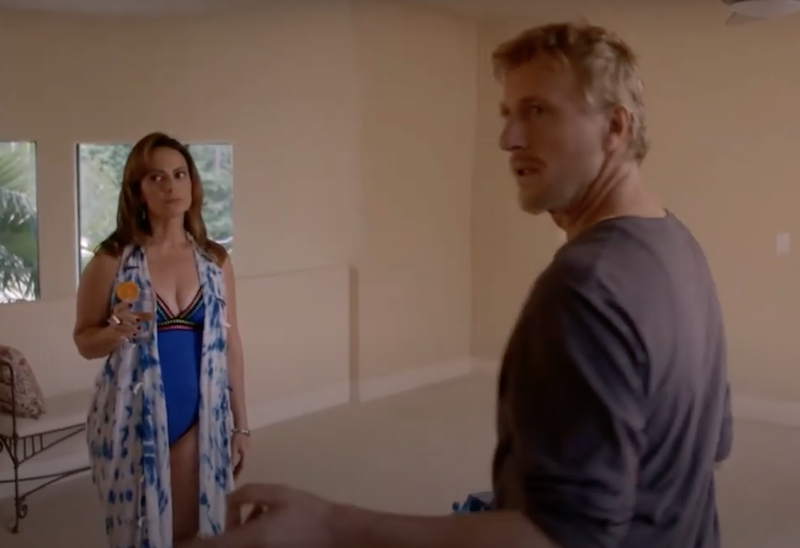
The Customer and Johnny the Handyman:
– “Well that’s just great, Not bad enough you took a shit in my powder room…”
– “You said that’s where I should go?!”
– “Yeah, I didn’t know you’d take a shit!”
New Beginnings
But things aren’t stuck for long as Johnny soon meets Miguel – an insecure teenager who finds a mentor in Johnny Lawrence. While the original mentor of Karate Kid, Mr Miyagi, was a pretty black and white good guy, Johnny at the beginning of the series is shown to be very much the antihero. And while Johnny a lot of the times achieves the same outcome as more typical role models, his motives are always a bit off centre.
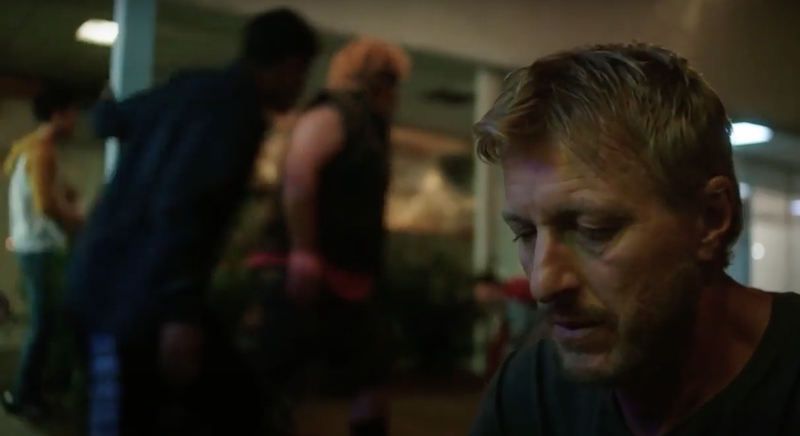
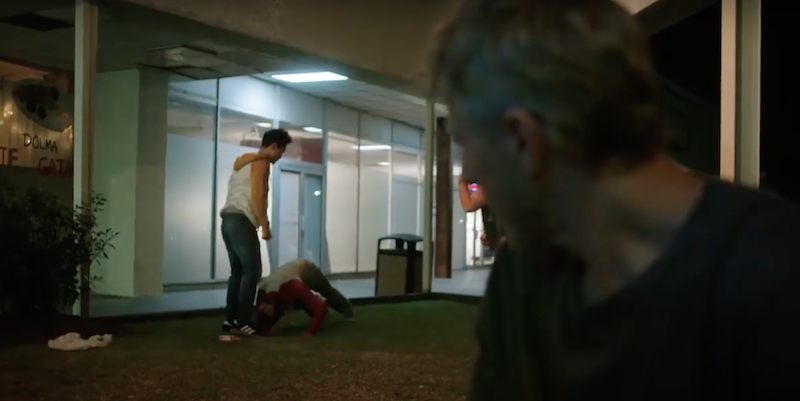
During one of Miguels and Johnnys first encounters – Johnny beats up a gang of teenagers who are pushing Miguel around at a gas station – and of course you get the impression the motivation is a mix of the days frustration working as a handyman, annoyance with the bullies and some amount of compassion for Miguel. And maybe, just maybe, not wanting the bullies bouncing Miguel off of Johnnys muscle car.
And if you weren’t ambivalent about our anti-heros’ motives yet I guess the fact that we’re seeing an adult beating up teenagers might give you some pause (and not much of a surprise – the scene ends with a police arriving at the location and pepper spraying Johnny. But of course just like in the original it doesn’t take long to realize that both possible protagonists are going to get a lot out of their newfound relationship.
Cobra Kai, Karate Kid and a guy called john…
A lazy summary of the general premise of Cobra Kai could easily be done by just referring to the original Karate Kid movie and its plot. And I maintain that you don’t need to see Karate Kid 2 or 3 to enjoy Cobra Kai but you should definitely see the original Karate Kid before watching Cobra Kai, as Cobra Kai is the obvious true spiritual sequel to the excellent John Avildsen directed first film of the franchise.
On that note: some reviewers have compared Karate Kid and Cobra Kais success as “catching lighting in a bottle – twice” and I agree but would also like to add that John Avildsen, the director of the first film, also directed Rocky. That means the original director of Karate Kid has caught lightning in a bottle twice AND, in the process of doing so, basically created an entire genre by making first Rocky and then Karate Kid both genre defining offerings. All so the world could enjoy the aspirational-underdog-set-in-a-somewhat-athletic-context genre from the 80’s and forward. Thank you Mr Avildsen! And we definitely forgive you for most likely having a very funky haircut.
*spoilers* …And it’s still a cruel summer
Cobra Kai has a lot of similarities to Karate Kid, even down to the social dynamics: Daniel being Italo-American, while not explicitly stated, Daniel was the pariah in the WASP setting of the first movie aspiring to date upper class Ali. Miguel is from Ecuador, that makes him “hispanic” or “brown” or whatever flavour or label is used in the US to categorise people. And so, just like Daniel used to be, Miguel is also low on the social ladder. And Miguel falls in love with Sam Larusso, Daniel Larusso’s daughter who, arguably even though her dad is nouveau riche, definitely belongs to the affluent strata of Californian society. Again a very familiar theme reminding us of the original Daniel falling for Ali with an “I”.
Daniel…
And just like in the original movie it’s obvious the kids just can’t get a break when it comes to romance. The first love stories, with the mandatory jealousy tripping the main characters up, are central to the main characters stories. Daniel spying on Ali and getting covered in spaghetti is a classic scene from the original movie and one of those were you were kind of knowing where it was going but hoping it wouldn’t go there…
… and Miguel
In Cobra Kai you get Samantha hiding her relationship with the Cobra Kai member Miguel from her dad Daniel, and then of course Miguel unwittingly walking in on a dinner with the Larussos and Daniels new protegé Robby (who incidentally is Johnnys wayward son) taking a serious interest in Sam who’s dating Miguel… Poor kids. Makes you wonder if love was this complex when you were a teen. And I think it was!
The mentor and the adept
Cobra Kai is a smart production with incredible heart. The writers managing staying true to, and at the same time expanding on the originals themes. This while maintaining the feel of the original but painting the story on the larger (and perhaps more nuanced) canvas of a series format.
The way the culture gapped Japanese Mr Miyagi and very American New Jerseyan Daniel Larusso contended and explored the world together in the original Karate Kid is repeated by making aged Johnny Lawrence a guy frozen in time and Miguel his sporadic guide to modern life. And this is just one of the many great dynamics of Cobra Kai that the outstanding writers have managed to create together with the terrific cast.
The mentor and adept theme repeats during Cobra Kai exploring this relationship between a number of the lead characters. For anyone having been close to a traditional martial arts club the unquestioning stance you’ll get in a segment of these places will be familiar. Cobra Kai exposes the fallacies of the mentors & students alike and not without love.
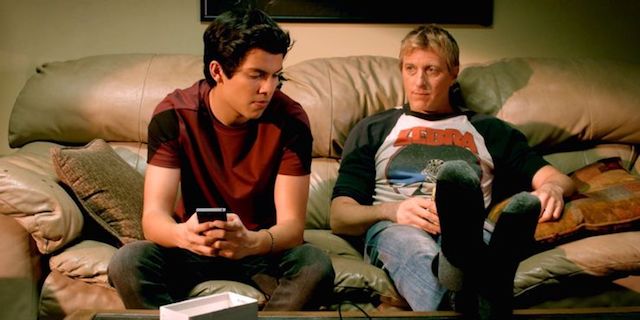
Miguel Helps Johnny make a Tinder profile
– “Ok, what are your likes?”
– “My likes?!”
– “Mm-hmmm…”
– “What am I supposed to say? Long walks on the beach? I like muscle cars, martial arts and Iron Eagle… And Iron Eagle 2”
But let’s not get too philosophical here. In Cobra Kai you’ll enjoy the antics of Johnny, who while he teaches Miguel to punch, kick and be a “badass”, Miguel also helps his sensei re-connect with a world full of internet (where, much to Johnnys amazement, you can search for “babes”!), Facebook and Tinder. In Johnnys own words: “Hashtag that and put it on the internet!”
Who’s bad?
While Cobra Kai is a multi-layered thing, and like already mentioned deals with love and relationships – the most notable theme in Cobra Kai is the role reversals of the protagonist of the original (Daniel) versus the antagonist (Johnny). With the release of Cobra Kai this again has become one of the most debated themes of the Karate Kid franchise: who is the hero and who is the villain? In the original Karate Kid there is little doubt and only some ambiguity: Daniel is the good kid and Johnny and the Cobra Kais are evil bullies – and Sensei Kreese is evil incarnate. In Cobra Kai the perspective of both Daniel and Johnny are explored and even Sensei Kreese’s background is fleshed out going from the inexplicably diabolical to more of a tale of how war could affect someone during a turbulent era of American history.
Before we dive into this some Social Media Trivia: on Facebook when I was still using it, there was a pretty popular group that maintained the perspective that Daniel Larusso was the villain of the Karate Kid franchise… the group consisted of a lot of Cobra Kai and Johnny memes and tongue in cheek jokes that maintained the story of the girlfriend stealing, sucker punching and illegal kicking Daniel… I don’t know how much this inspired the direction of Cobra Kai, if at all. But obviously there was quite a few fans who thought there was some ambiguity to the original Karate Kid (and the rest of the trilogy).
monkeys, Ambiguity and sucker punches
With at least a few years distance to our teens, most of us will also know that teenagers are basically emotional monkeys with little impulse control (teenage males even more so) and one of the wonders of humanity is how many teenagers turn into more or less functioning humans just by the process of ageing (and without dying in the process). Expecting consistent reasonable behaviour that for the most part is missing from adults is even more unrealistic when the people concerned are teens.
As the series progresses and we get treated to glimpses of the main characters pasts and we get to learn that there is at least two sides to every story. Probably more. For anyone, who like me, did sympathise with Daniel as he was bullied and harassed in the original movie but yet, like me, still had this nagging dislike of his moaning complaining, typically misplaced teenage bravado and this combined with bad self confidence that just made Daniel pick a lot of unnecessary fights. And if you, like me, thought that maybe there was a reason for the over the top behaviour of Johnny. Perhaps he was broken hearted about not being able to patch up his relationship with Ali (and most people don’t behave quite like Johnny if there isn’t something bad going on in their family).
And perhaps like myself, your favourite character was Bobby – the Cobra Kai who was always torn between his friendly good nature and doing a good leg sweep (ie. the Cobra Kai philosophy). If so then you’re going to get some satisfying exposition in Cobra Kai.
You may also have thought about the notion that Johnny isn’t that black and white about his loss at the All Valley Championship in the original film – he cares about the accomplishment even though he didn’t win, something that goes against the surface of the Johnny character and the Cobra Kai ethos but connects so well with the retrospective glimpses you get in Cobra Kai of when Johnny started training karate as a wide eyed kid falling in love with the badassery of the discipline of the training in the dojo. All of these nuances and the obvious desire to flesh out the characters without a doubt shows what a labour of love the Cobra Kai series is by the creators who, together with the participating original cast, are quite clearly huge fans of the original Karate Kid.
Johnny confessing to his Cobra Kai cohorts: “I’ve got this one chance to make things good this year”, and later as Daniel wins the All Valley tournament Johnny, not without emotion concedes that “Daniel, you’re a good guy”.
In fact during an interview during Cobra Kai promotions, William Zabka who plays Johnny, makes it clear he based a lot of his interpretation on this side of the Johnny character.
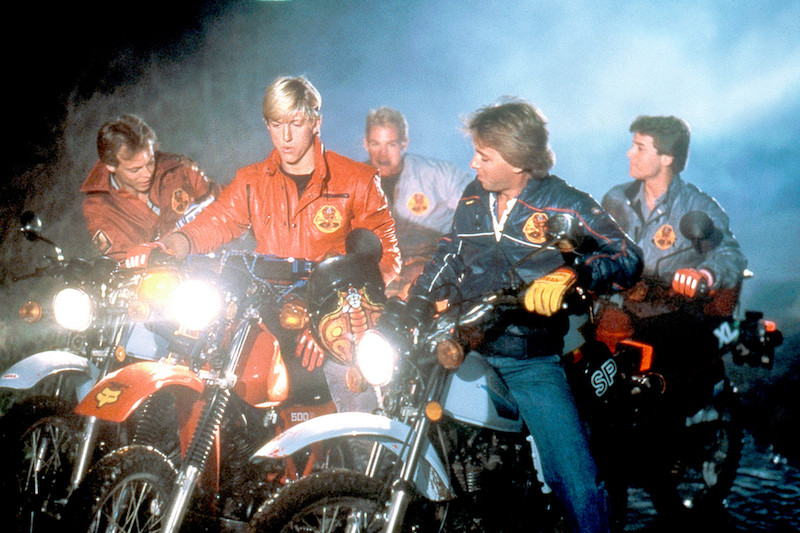
Cobra Kai lovingly expands the already three dimensional characters to great effect and this is not exclusive to Johnny.
With age and money Daniel has definitely turned into someone easily offended and sometimes even being a condescending bully. And Johnny, while retaining a lot of his original character as he’s stuck in his time bubble, has mellowed out and carries melancholia and a easy to see humbleness.
I don’t like to get into deep thought about things I enjoy but maybe there is something in the rebounding character of the underdog who wins? Maybe going from the bottom to the top may be a harder journey than expected and not one with a certain outcome.
And Cobra Kai for the first 3 seasons, while not coming down on either the side of the Facebook conspiracists nor the “what you see is what it is” section of fans of the original film, instead paints a picture with a lot more depth to its characters. The Cobra Kai world isn’t just painted in greyscale but also reverses and reveals things that will make you question and feel sympathy at times when you expected to feel none.
The players
Johnny Lawrence, aka sensei
The star of the show is Johnny Lawrence. The beloved leg-sweeping anti-hero of the original installment of Karate Kid. Johnny is now the typical aged jock with a failed life. 40-something complete with a divorce, an estranged son and generally being out of touch with the times, Johnny wonders where his life has gone as he absolutely knows when and how it went wrong – insights he self medicates with numerous bottles of Coors Banquet.
With a background that soon shows to be more complex than the surface of the original Karate Kid lets on, Johnny, the protagonist of Cobra Kai takes a slow trajectory towards, dare I say it: redemption. Love, being a father and mentor and not eating bad meat for breakfast.
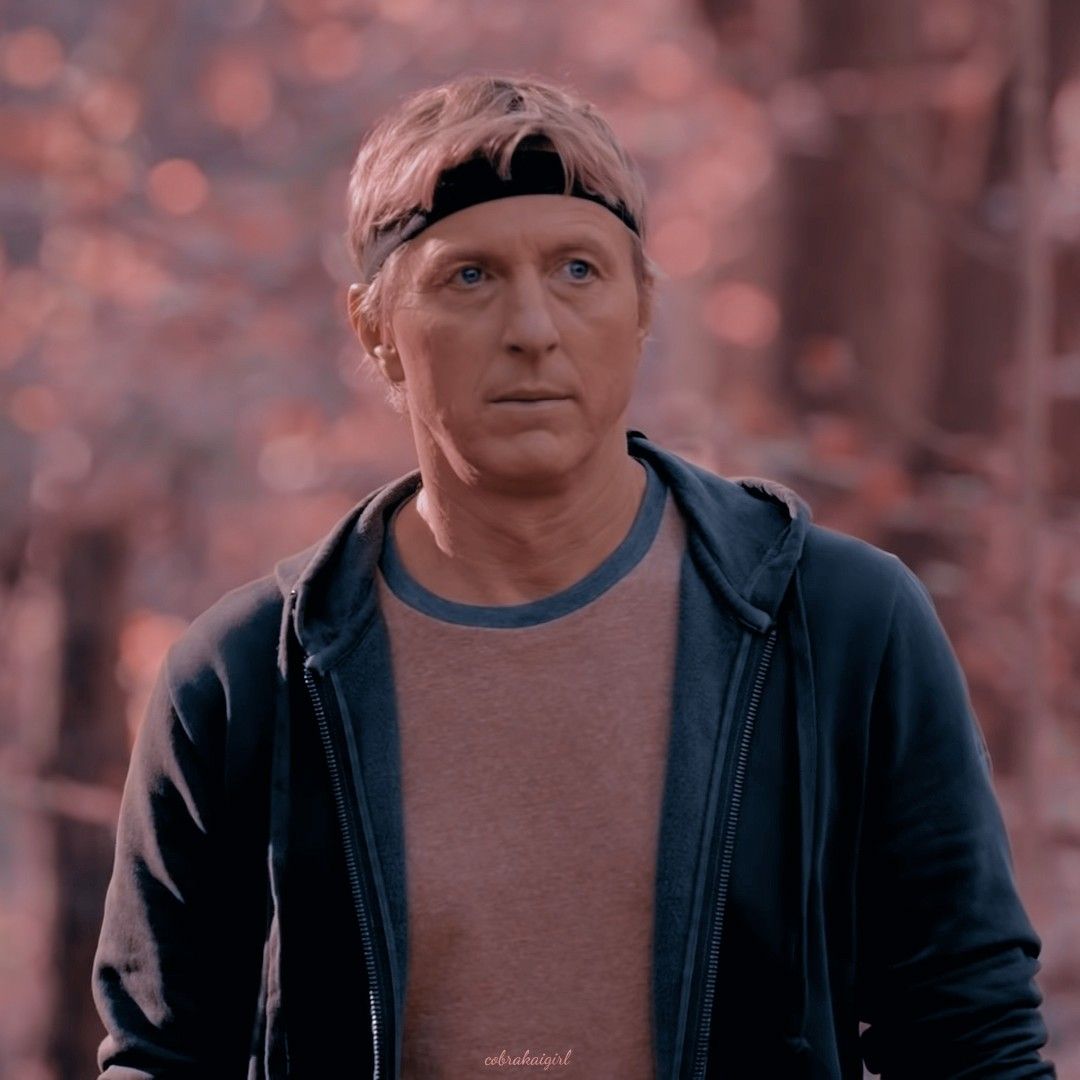
William Zabka
1965, NYC, New York, USA
Miguel Diaz
A timid, smart and good natured semi-nerd kid running into trouble with the cool kids at school. On the surface Miguel is a repeat of Ralph Macchio’s Daniel Larusso character in the original film the Karate Kid. He quickly becomes the protege of Johnny as Johnny reluctantly defends Miguel (and Johnnys red Pontiac Firebird) from the cool kids.
Miguel transitions from having little agency over himself to exerting more control – not in the least with the confidence the training with Johnny brings him. And although he briefly flirts with overconfidence he quickly comes back to being a genuinely good down to earth kid.
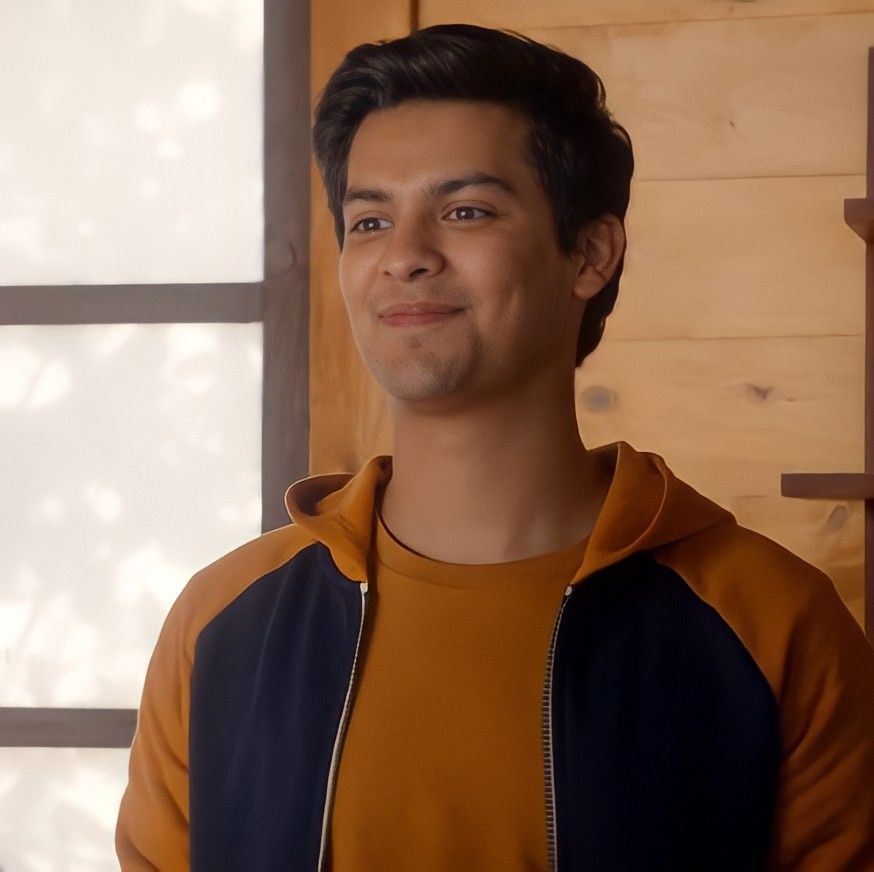
Xolo Maridueña
2001, Los Angeles, California, USA
Daniel Larusso
The original Karate Kid often has the same oily motormouthed braggart style as in the original film and is now the owner and sales manager of a chain of local luxury car dealerships. Daniel was the archetypical underdog but is now an established businessman with access to country clubs and boards.
Daniel is when the series starts one of those people who success hasn’t made better. In a way still stuck in the past, building his popularity and success on the fluke victory during the All Valley Championship, the smooth transition from the valley kid to the affluent car dealer has maybe not provided Daniel with the hardships that breed humility and introspection. His family though seems to know there is a genuinely good guy under the veneer of the car salesman.
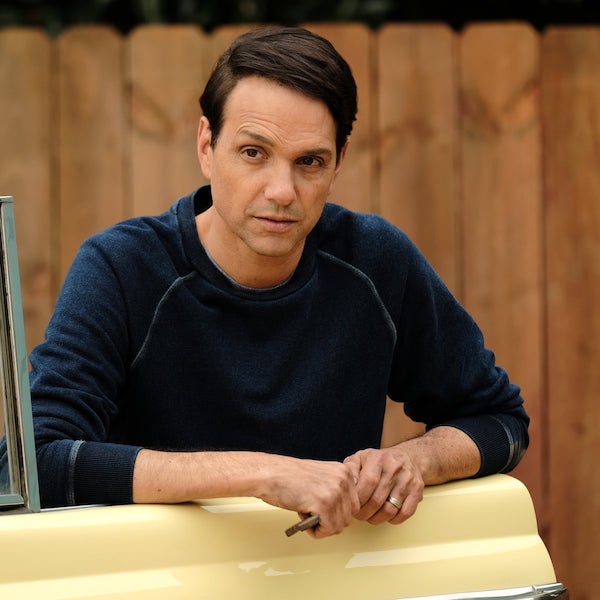
Ralph Macchio
1961, Huntington, New York, USA
Samantha “sam” Larusso
The daughter of Daniel and ingenue of the series doesn’t seem quite as tough as Ali, her obvious Karate Kid counterpart but is a smart and kind person who grows and finds out what she wants from life during the two first seasons. Sam has been getting karate training from her dad since a young age but has, due to her parents social standing, lived a pretty sheltered life.
What’s really likeable about Sam as a character is that she isn’t painted with the extremes some female characters are prone to. She is mostly good, but not always righteous, she is strong willed but not a caricature of stubborness, she’s emotional but not portrayed with one-sided emotions.
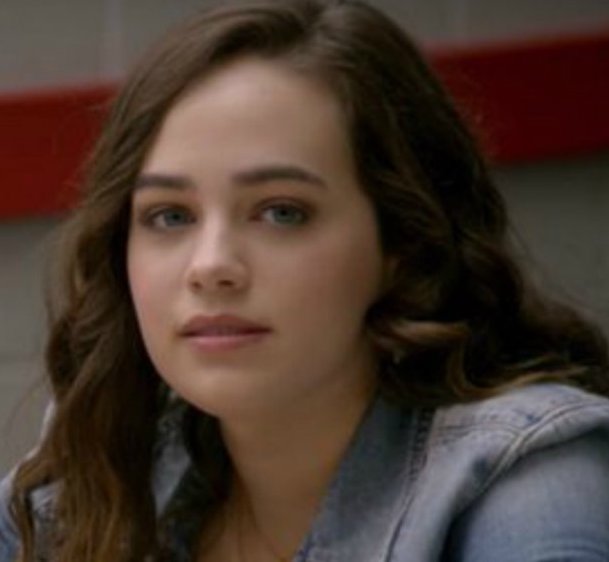
Mary Mouser
1996, Pine Bluff, Arkansas, USA
Robby Keene
The wayward son of Johnny and of the same age as Miguel and Sam but, as the show opens, due to neglect isn’t going to school and is keeping bad company. Johnny you see, hasn’t been much of a father to Robby.
The amount of time that you wish that Robby and Johnny would realise how much they’ve missed each other and try to mutually reconcile is significant. At times Robbys naive openness can be mistaken as him being duplicitous. Robby finds a mentor in Daniel Larusso and a love interest in Sam. The resulting emotional triangles being at least two.
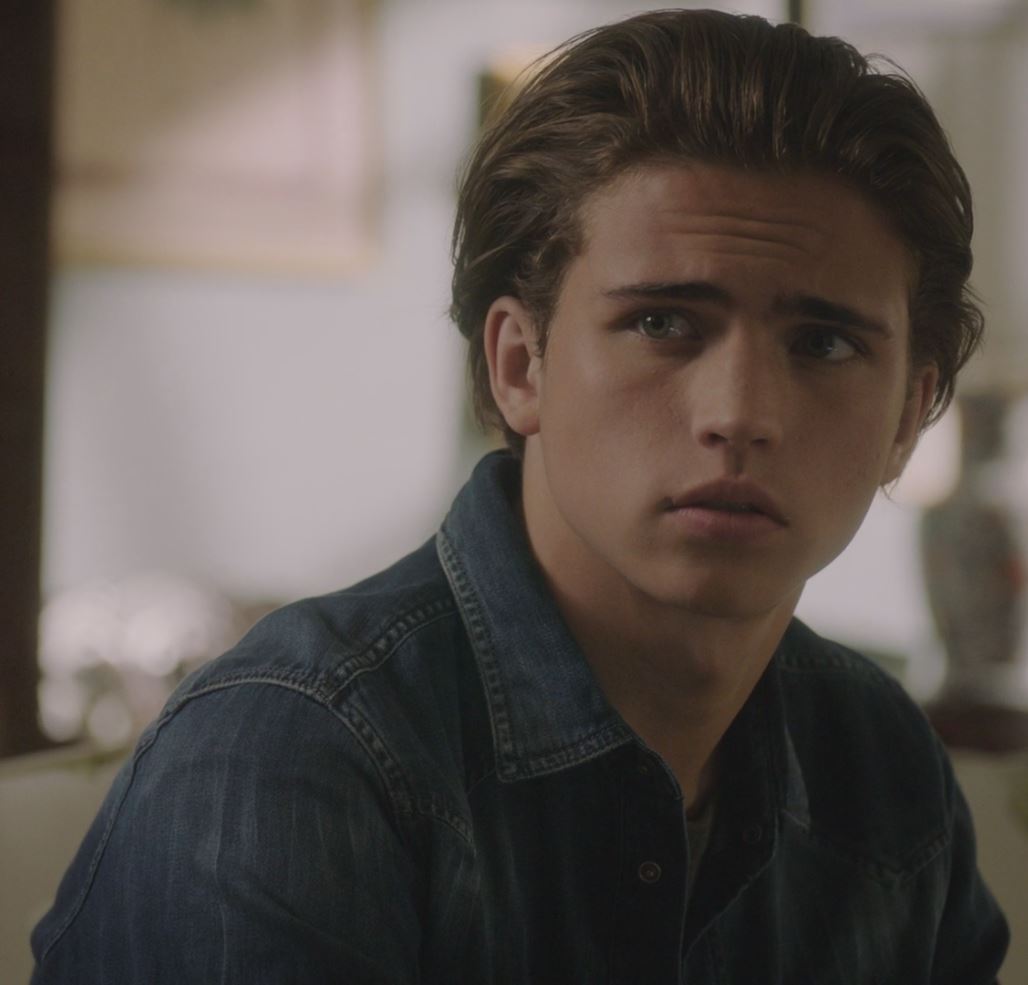
Tanner buchanan
1998, Lima, Ohio, USA
The verdict?
Cobra Kai brings a lot to the table. There is comedy without it being forced. There is action for those who like that. More importantly there is plenty of the stuff that made the original Karate Kid great: Love, Teenage Angst and cycles of perserverance and triumph.
A true heir to the original movie it delivers with more clarity and heart than installment 2 and 3 of the original trilogy.
But Cobra Kai isn’t just a faithful replica of previous glories – it adds and expands to the story and world of Karate Kid. With more time to tell the stories of both Johnny, Daniel and Kreese it also adds new characters with their own tragedies and dilemmas. Miguel, Sam and Robby with their friends are true to the Karate Kid world and with 3 seasons out the writers are still going strong.
Out of all the themes and stories told in Cobra Kai what I think about the most are the relationships. The overarching stories about parents and kids, mentors and students and how the older generation affects their own preferences and patterns in younger generations while they struggle to find out just who they are and who they could be – the story that stays with me is the story of Johnny and Miguel.
If you havent’t tried Cobra Kai I recommend it. And write a comment to let me know how you liked it.
Need more ? Click here to check out some cool links and video resources
This is a very nice post dealing with Johnnys character in depth in the first movie. I think it’s very perceptive and makes me wonder if the casting were trying to achieve the same when casting Tanner Buchanan as Robby Keene. Click here to read (opens in new window).
SyFy did an interview that deals with the final moments of the original movie and the Johnnys and Kreeses relationship.
Click here to read. (opens in new window).
Watch this interview previously unused Karate Kid footage and how it was used to transform the end of Karate Kid into a new perspective shown in Cobra Kai.
Want to read more about the Karate and The Fighting?
There’s a lot of fighting and martial arts in Cobra Kai – if there is a lot of karate in there is debatable. If you are interested in any reflections and thoughts on the karate, the fighting or fight realism you’ll find some speculations and thoughts here. In Karate Kid fan circles there’s been a long discussion about what kind of martial arts can be seen in Karate Kid. If you don’t find the kicking and punching stuff interesting I highly discourage you from expanding and reading this content. Understand Reader-san?
OK writer-sensei! understand! Now let me read the punch-kick stuff!
Karate and the US
The martial art of Karate is Japanese per definition and originates from Okinawa (and China) and is a mainly standup fighting style with an emphasis on striking (punching, kicking, elbowing and kneeing). Main karate styles are Goju Ryu (whose founder Chojun Miyagi is hinted at in Karate Kid – Daniel Larussos teacher bears the family name of Miyagi and other tidbits are dropped throughout the first movie that connects it to Goju Ryu), Wado Ryu, Shiito Ryu and Shotokan (the latter which together with traditional Korean martial arts forms the base of Taekwondo).
Of the newer karate styles one of the largest and most popular is Kyokushin, a style that emphasises heavy sparring and is based on both the direct linear fighting of Shotokan as well as the more circular and oblique Goju Ryu. Kyokushin also happens to be the style of karate I’ve trained the most and love. All of the above styles have lots of off-shoots and most generalisations about karate stops there, especially in the US. The karate in Karate Kid and Cobra Kai is definitely not Kyokushin or any of it’s so called knock down off-shoots. I’ve seen this claim less frequently than others but for anyone having trained in Kyokushin the claim is ridiculous. However the Cobra Kais focus on badassery does have some spiritual spritual alignment with Kyokushin. And although I’m adult I can remember the numerous times I’ve jogged into the dojo chanting “cobra kai, cobra kai” silently in my mind.
What is a mcdojo?
Karate (pronounced “‘Koroty” in ‘Murican) was huge in the US during the 70s and 80s and was most likely initially spread by servicemen who were stationed at the US military bases in Okinawa who picked karate up while being stationed there. While the definition and quality of karate promoted in the US (and in other places outside of Japan) was already questionable, movies like the Karate Kid, Best of the Best and a lot of others made karate and anything resembling or adjacent to karate red hot (Best of the Best actually revolves around a Taekwondo tournament). The wave of karate dojos and bastardization/hybridisation (like American Kempo Karate) and their legacy of dubious provinence and shady motivation was the breeding ground of what today is known as McDojos, ie illegitimate made up martial arts and dojo owners just out to make a quick buck – main demographic: middle class families with enough means to enroll their children on a fast track to a black belt. If you’re interested in this phenomena there are internet forums where forumites constantly bicker about the legitimacy and effectiveness of various combat arts and sports (search for Sherdog and Bullshido if you’re interested).
The pop cultural impact of the McDojo culture remains to present day. Please also check out Master Ken on Youtube to get a cultural primer on McDojos. Oh and if your kid has trained for less than 5-6 years and has a black belt – I’m sorry but chances are you’re letting them train in a McDojo (also those are some wonky mathematics since according to most local laws any training with sparring probably requires your kids to at least be of school age and for most higher grading fighting elements are required… but you know, I’m sure they kick very prettily). In short: don’t let some bullshit merchant take your money. While the fighting effectiveness of a lot of contemporary traditional martial arts training is dubious at least it isn’t made up in bad faith.
Cobra Kai and the Fighting
So from someone who is a fan of combat sports and have been a practitioner of some, how does the fighting action stack up in Cobra Kai? Well for good and bad the style of fighting from the original Karate Kid movie(s) has been preserved. All the Cobra Kais and the opponents fight in something resembling a points sparring style (but with more flexibility and dynamics than modern points sparring, for example lots of sweeps and takedowns and continuous follow up striking) combined with Korean influenced circular movement .
Some source I read said that the Cobra Kais fighting in Karate kid was actually based on Korean Karate. This I would definitely believe. There is a lot of spinning movement, heavy emphasis on kicks and less of the linear in and out motion of classic point karate sparring. One of the odd things that’s been added in Cobra Kai is frequent use of push kicks. I’m really curious as to why, maybe it’s because some of the fight scenes are pretty long so they’re used to open up distance between fighters and create fights that are more drawn out. Push kicks or stop kicks are generally more common in some kickboxing but is basically a very useful Thai Boxing technique (in the thai boxing curriculum called a “teep”). But in traditional karate curriculums teeps are rare if you don’t fight in the knock down style of Kyokushin.
(Edit: after the bulk of this article was written I found a lot of compelling indications that the style used by the Cobra Kais in Karate Kid is in fact Tang soo do, a Korean martial art partly based on Shotokan Karate, traditonal Korean martial arts and Chinese influences).
Most of the fighting is pretty showy and wouldn’t work in a practical context – if you do a low arm block to block a kick like a round house kick, your arm is likely to get damaged or the kick just hitting you with full force. In practical fighting most blocks will look like they do in boxing and thai boxing – short economical movement close to your body. You could say the real life pressures of fighting narrows things down to technical components that will vary a lot less than all the martial arts styles do. Another strange and funny thing from the original film that is still done in Cobra Kai are spinning kicks where the kick lands with the side of the foot or side of the shin (instead of the front of the shin or the heel as in a spinning round house or spinning back kick respectively). Not very practical as it doesn’t do much damage but I guess it is pretty easy to execute technically. Which makes sense if the fighters aren’t real combat sports practitioners (Daniel/Ralph Macchio for instance has a fairly atypical body for a fighter, lanky with slanting not very wide shoulders, high centre of gravity and wide hips).
are there real fighters in Karate Kid and Cobra Kai?
The original Karate Kid movie was notably lacking in actual karate practitioners. Out of the original Cobra Kais I believe the only karate guy was Chad McQueen (Steve McQueens son) who plays Dutch. Chad actually trained under Chuck Norris (whos karate is mostly Tang soo do – ie Korean karate) Darryl Vidal, not a Cobra Kai but who plays himself and is one of the fighters in the All Valley Tournament (and is also referenced in a scene in Season 2 of Cobra Kai), was also an experienced karate practitioner and I believe co-ordinated some of the fights in the original film as well as creating the crane kick (he is the stand-in for Mr Miyagi as he is seen practicing the crane kick on the beach standing on a pole).
William Zabka who plays Johnny I believe had wrestling experience but no striking experience prior to Karate Kid. Ron Thomas, who played Bobby, the empathic Cobra Kai who wrestles with a lot of the bullying that goes on in the original Karate Kid, is actually a jujitsu and judo black belt in real life – if you watch Bobby and Dutch fighting in the original movie you’ll notice that they have better footwork and look the most believable when fighting.
In summary
Karate Kid and Cobra Kai does use martial arts and combat sports as an enviroment and plot vehicle. Don’t expect to get a lot of authentic fighting or even history from it. While there is some about the Okinawan roots of Karate in the first Karate kid installment as well as Daniel and Miyagi going to Okinawa in the second – it should all be seen through the lense of the 80s or more contemporary entertainment. And I don’t think that really detracts from the stories told. It’s just some exciting action and a framework for the plot.

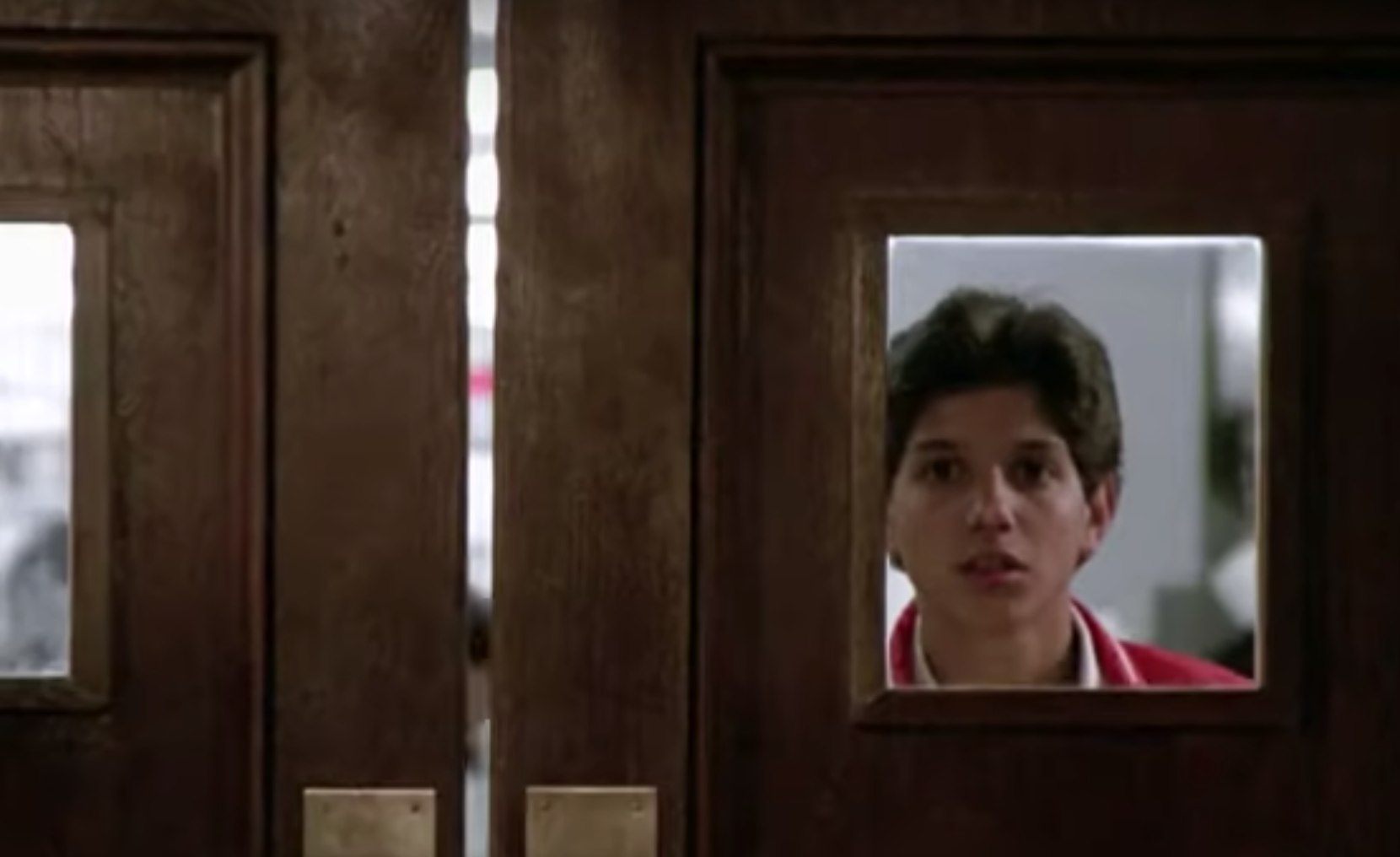
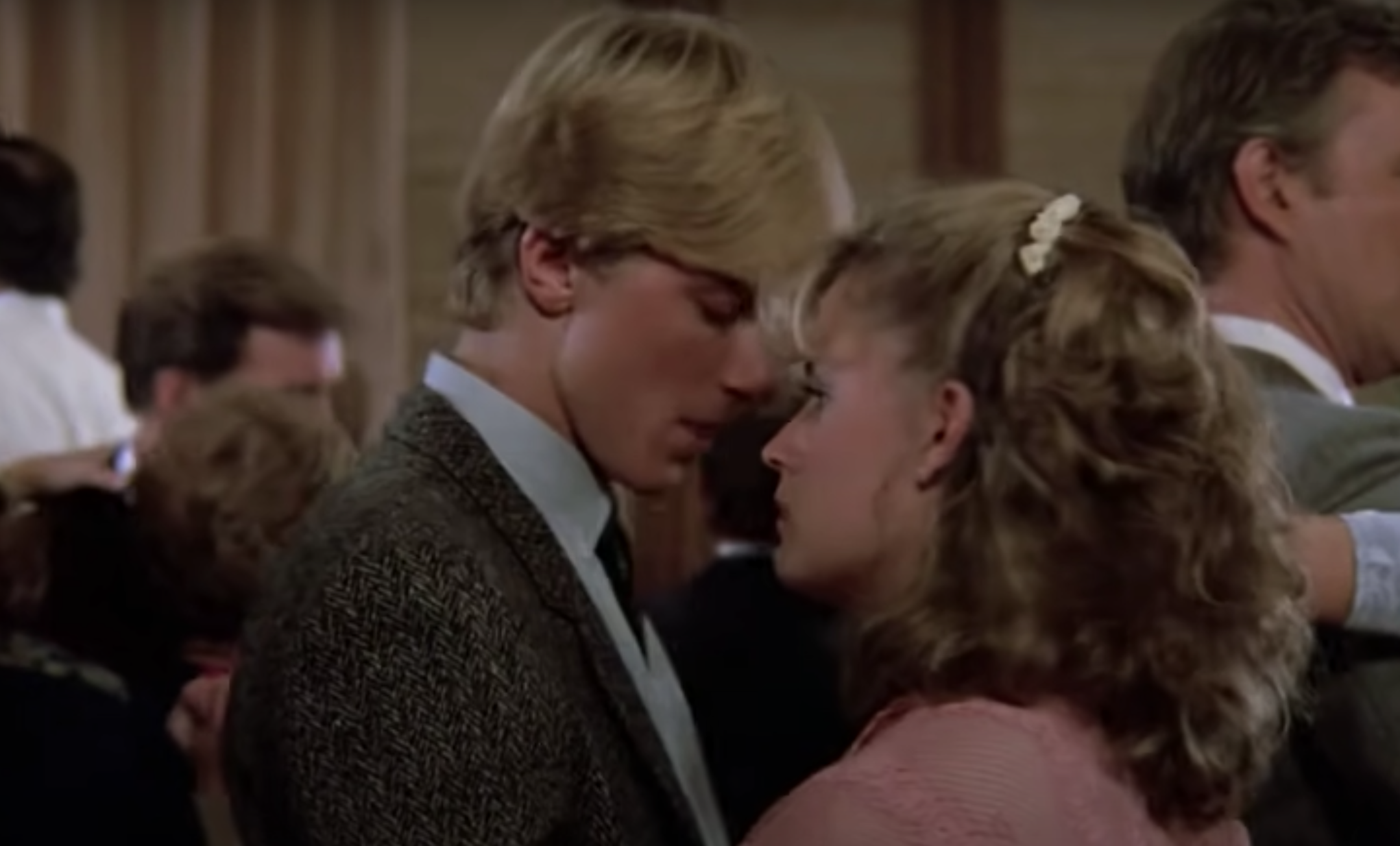
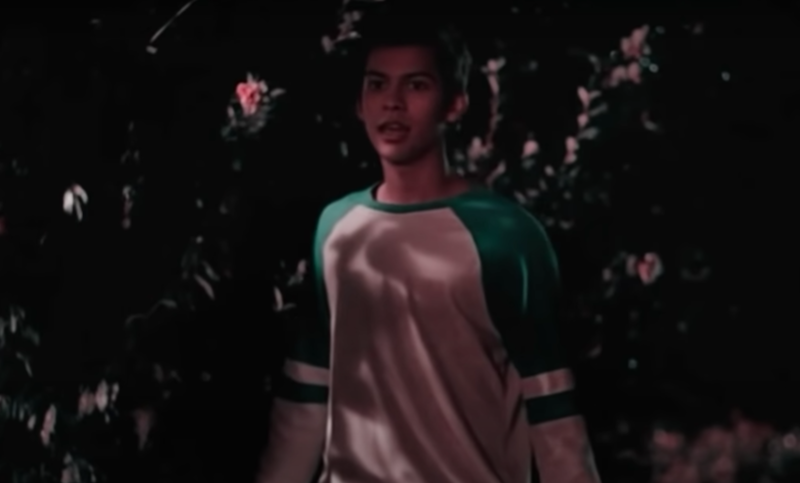
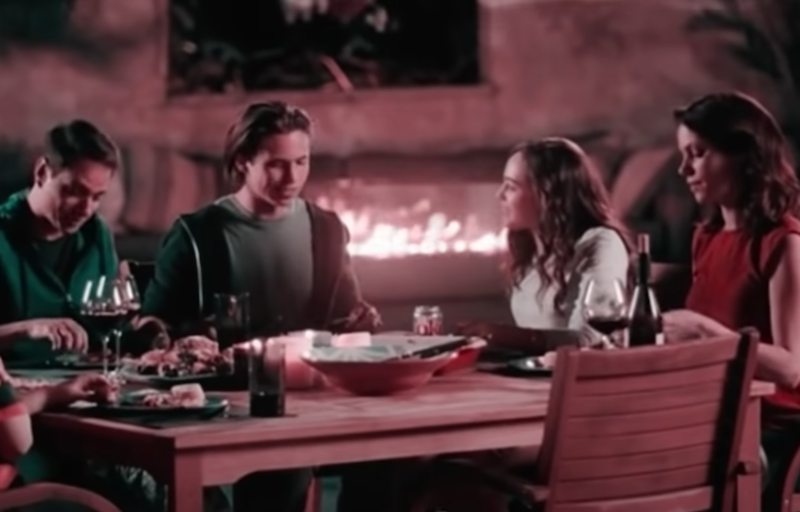



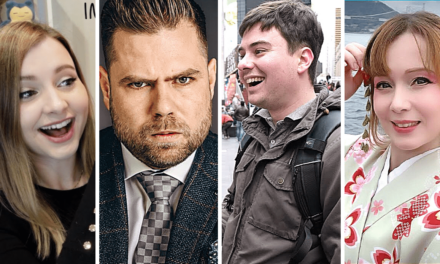

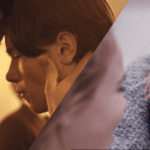






0 Comments